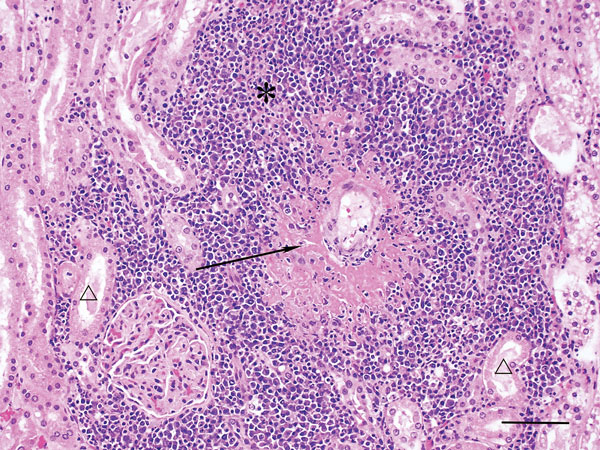Volume 21, Number 12—December 2015
Dispatch
Hendra Virus Infection in Dog, Australia, 2013
Figure 1

Figure 1. Kidney of dog infected with Hendra virus, showing marked vasculitis (arrow) and inflammatory infiltrates (*) effacing renal tubules (△). Scale bar indicates 75 μm.
Page created: November 17, 2015
Page updated: November 17, 2015
Page reviewed: November 17, 2015
The conclusions, findings, and opinions expressed by authors contributing to this journal do not necessarily reflect the official position of the U.S. Department of Health and Human Services, the Public Health Service, the Centers for Disease Control and Prevention, or the authors' affiliated institutions. Use of trade names is for identification only and does not imply endorsement by any of the groups named above.